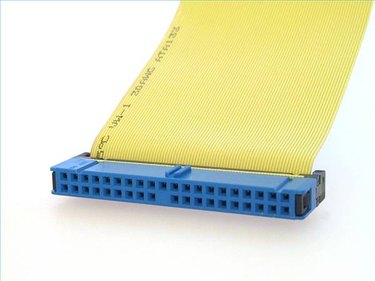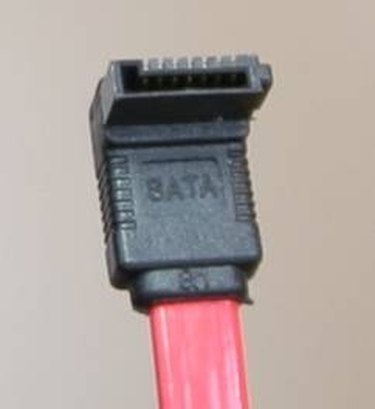This article will help to identify internal hard drive data cables. There are three main types of cables: IDE/PATA, SATA and SCSI.
Significance
There are several types of hard drives, and they all require different data cables. To connect a hard drive to a computer, one must have the proper cables and plug the cables into the appropriate places.
Video of the Day
Video of the Day
Background
There are three main types of hard drive data cables: IDE/PATA, SATA and SCSI. IDE (Integrated Drive Electronics) drives, also known as PATA (Parallel AT Attachment) drives, are commonly found in personal computers. However, manufacturers rarely install IDE/PATA drives in new personal computers as of early 2009: These drives usually are found only in older computers. The IDE/PATA technology was designed in 1986 and has mostly been superseded by the SATA technology in new personal computers. SATA (Serial Advanced Technology Attachment) drives are also commonly found in personal computers; its technology was developed in 2003. SCSI (Small Computer System Interface) drives usually are found only in high-end server/mainframe computers. Although the SCSI technology has existed since 1981, it has been revised numerous times since then; SCSI drives are still used today.
IDE/PATA Cable

An IDE/PATA hard drive cable is a ribbon cable containing 40 pins. Either one or two devices may be connected to an IDE/PATA cable, and the devices need not be of the same type. For example, an IDE/PATA DVD-R drive may be connected along with an IDE/PATA hard drive on the same cable.
SATA Cable

A SATA hard drive cable has seven conductors and is smaller than an IDE/PATA cable. A SATA cable connects a single hard drive to a single connector on the SATA controller, which is usually found on the computer's motherboard.
SCSI Cable

SCSI cables look similar to IDE/PATA cables in that both drives use ribbon cables. However, SCSI cables have more pins than IDE cables. Depending on the SCSI interface, a SCSI cable may have 50 or 68 pins (IDE/PATA drives have 40). Like IDE, multiple SCSI devices can be connected to a single channel through "daisy chaining." Depending on the SCSI interface, as many as 7 or 15 devices may be connected to a single SCSI channel.